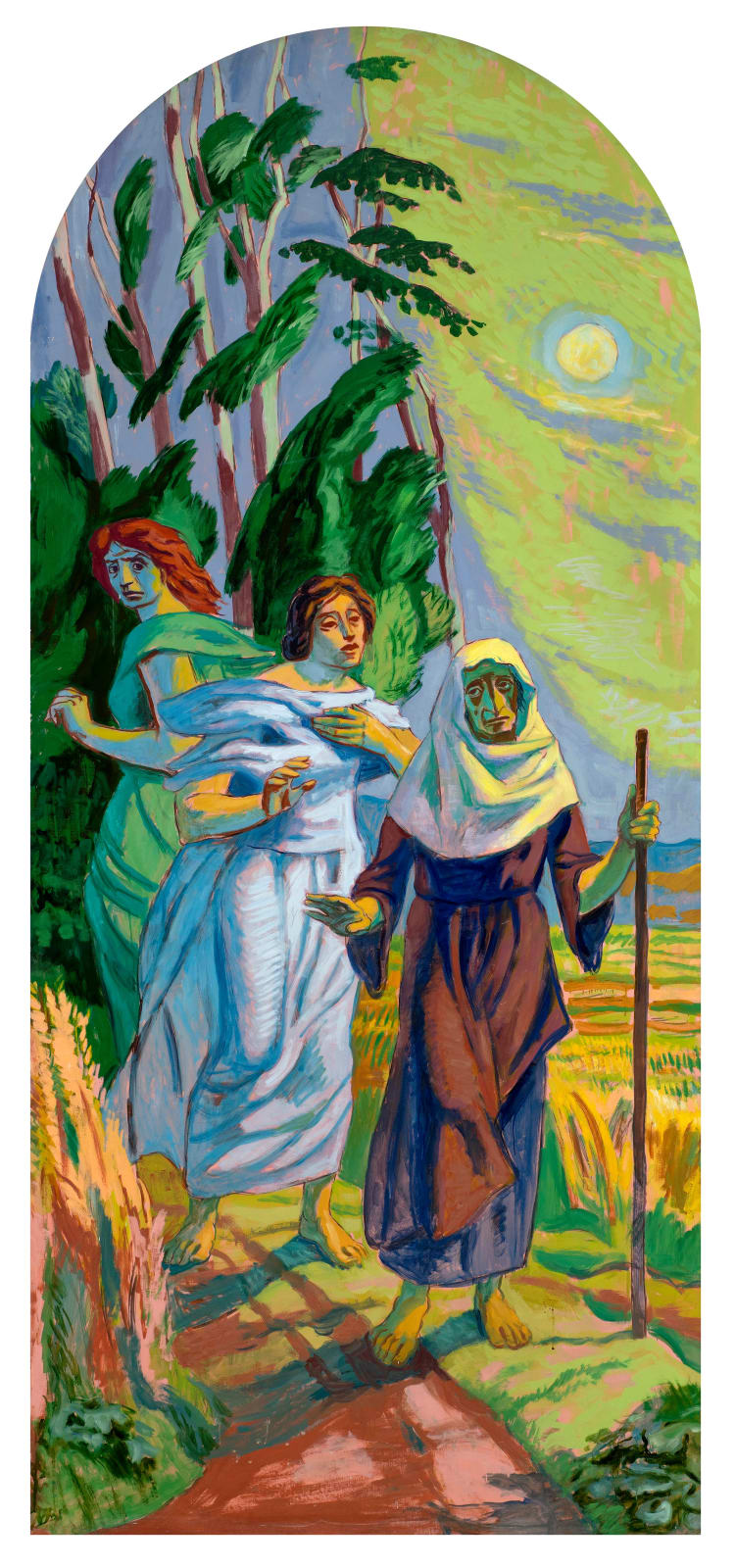Naomi and her Daughters-in-Law
Artist Hans Feibusch
Accession number 2013-f2
Naomi, her husband, and their two sons emigrate from Judah to Moab as a result of a famine. During the ten years they spend in Moab, Naomi’s husband dies, her sons both marry but later also die, leaving Naomi with her two daughters-in-law, Orpah and Ruth. Naomi decides to return to Judah as the famine has ended. Orpah and Ruth initially travel with her, until Naomi encourages them to leave her and return to Moab. It is their moment of decision that Feibusch paints.
Feibusch knew about the difficulties involved in making such choices. After winning the Prussian State Prize for Painting in 1930 he aroused Nazi antagonism, his pictures being publicly burned and he, himself, forbidden to paint. As a result, he found refuge in Britain in 1933, joining his British fiancée in London.
He paints the three women in the moment of decision. We see Naomi releasing them from their commitment to her, Orpah turning to return home, while looking back over her shoulder at Ruth proclaiming an ongoing commitment to Naomi - “Where you go, I will go; where you lodge, I will lodge; your people shall be my people, and your God my God.” Their expressions and gestures reveal their choices and emotions in an anguished moment where familial, national and cultural commitments are all in play, as is the case whenever people are forced to make decisions as to whether to stay or go, leave or return. There are no right or wrong choices in such circumstances, but whatever choice is made relationships and commitments are impacted, as Feibusch himself experienced and understood.
This work is one of a series of five oil paintings on canvas on Old Testament subjects that together explore issues of faith, sacrifice, courage, love, and redemption, originally commissioned directly from the artist by Czechoslovakian-born Rabbi Hugo Gryn, a Holocaust survivor, for the Stern Hall of the West London Synagogue in 1973. The scene is from the biblical Book of Ruth in which Ruth and Orpah, two women of Moab, had married the two sons of Elimelech and Naomi, Judeans who had settled in Moab to escape a famine in Judah. After the death of Elimelech, and then the husbands of both younger women, Naomi plans to return to her native Bethlehem and urges her daughters-in-law to return to their families and re-marry. Orpah reluctantly departs but Ruth begs to stay with Naomi and share her fate. They travel to Bethlehem and Ruth looks after Naomi by collecting the gleanings of the field belonging to a wealthy landowner named Boaz, whom she eventually marries, becoming great-grandmother to King David.
In this painting, set during the day when the sun is high, Feibusch shows the scene of Orpah's leave-taking and Naomi imploring Ruth to be allowed to join her as she departs. In the corresponding watercolour, he chooses to show the two women departing by moonlight.
In Judaism, the Book of Ruth is part of the biblical canon called Ketuvim, or Writings. Ruth's story is celebrated during the Jewish festival of Shavuot, the Feast of Weeks, 50 days after Passover.
All of Feibusch’s works on religious subjects employ a fresh and vibrant palette. In his Times obituary (21 July 1998), it was noted how Feibusch’s religious works exhibited ‘brilliant colour and a composition which is generally suave and classical, often lyrical: he was a man who valued warmth and passions in religion, knew how to project joy and sorrow in his painting, sorrow for European conflict being for many decades a keenly felt emotion’.























